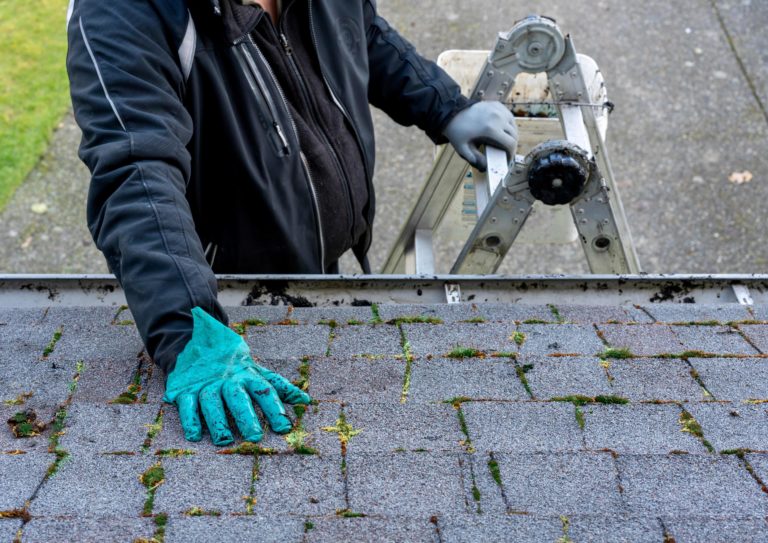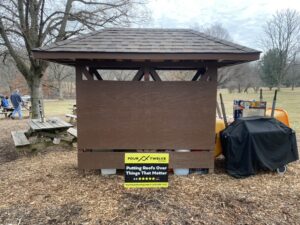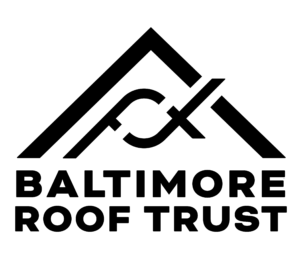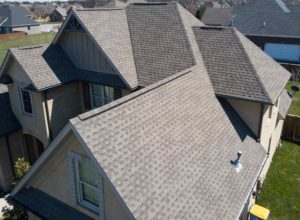It comes as no surprise that in Maryland, the winter months can bring about the harshest weather conditions of the year. From heavy snows to rapidly fluctuating temperatures, the structural integrity of roofs can quickly be put in jeopardy. While the roofs are covered in snow, it is nearly impossible to properly assess the deteriorating conditions caused by the winter weather. This is why it’s ideal to get a spring roof inspection, when temperatures rise and snow melts. It is highly recommended that a professional inspection is conducted and ensuing repairs are made in order to tackle the abundance of potential problems caused during winter.
Common Problems Caused by Winter Weather
Rust
Regardless of the main material used in your roof’s construction, metal is used in the flashing that seals the vulnerable areas that have the most potential to create a leak in the roof’s structure. Rust, being metal’s primary adversary, puts these flashings at high risk of failure. When snow builds up against these flashings, and does not melt for some time, rust can inevitably occur. When the snow does finally melt, a visual inspection should be performed. If any rust is spotted, it is crucial to have a professional conduct an inspection as the majority of the damage is usually hidden from ground view. A leak in flashing can lead to many other complications and compromise the rest of the roof’s durability.
Moisture and Condensation
During the frigid winter months, residents tend to enjoy a cozy and properly heated home. While this is a welcome comfort, it can lead to moisture build up when heat rises from the climate controlled living areas up to the snow on the roof, thus melting a layer of snow. This can create a pocket of trapped moisture that wreaks havoc on the roof’s infrastructure. Condensation produced by this affects areas in the attic and if left untreated, amasses into a necessity for major repairs. The damage caused by this can be tricky to spot and requires a thorough spring roof inspection to properly assess possible deteriorations.
Structural Damage / Leaks and Rot
Being one of the more difficult degenerations to notice, structural damage caused by rot can rapidly build up and threaten the entire roofing structure. Stemming from a multitude of possible failures within a roof’s construction, leaks that allow moisture to make continuous contact with wooden segments cause rot that eats away at the wood. This can spell disaster as rot spreads fast and leads to dangerous structural damage. It is common for most buildings to utilize wood as the main material in the framing. If this framing is threatened, other major components of the building can be in danger of abrupt degradation. Repairs needed for this type of damage are extremely time sensitive and require hasty action. If left untreated, the repercussions are immense. Sealants used to protect against leaks are subject to cracking and warping when trapped moisture freezes and expands. This can be impossible to spot by the untrained eye and requires a professional to properly assess.
Shingle Damage
Shingles are typically the first layer of protection in a slanted roof’s construction, leaving them at a high risk of damage from the brutality of winter weather. Thankfully, missing or deformed shingles are easy to spot. While the problem may only appear to be on the surface level, damaged shingles can be a sign of further complications. Cracked shingles, caused by hail or falling branches, can be an indicator of leaks while curling shingles suggest water damage and rot. Once noticed, further inspections are vital in order to take proper precautions and prevent further issues.
A Spring Roof Inspection Can Save Headaches Down the Line
Once the destructive elements of winter have passed and the comforting warmth of spring arrives, it is crucial to properly evaluate the toll taken on your roof. Potential damage caused can be severe and require immediate repairs in order to avoid detrimental malfunctions. It is in the spring season that we strongly recommend home and business owners to reach out to us for essential bi-annual inspections. Taking this precaution can prove to be pivotal in circumventing roof replacements and saving money on future repairs. Not only does regular maintenance extend the overall lifespan of a roof but it also assists in lowering air conditioning costs in the upcoming summer heat by patching up leaks and strengthening insulation.
Here at Four Twelve Roofing we are dedicated to preserving an honest and transparent roofing service for our clients. If you would like to schedule a free spring roof inspection today, contact the Four Twelve Team.







